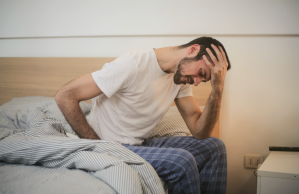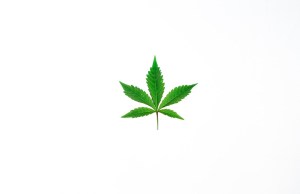
- Male hypoactive sexual desire disorder is an underdiagnosed sexual disorder that cripples a man’s desire for intimacy or sexual activity.
- Hypoactive sexual desire can occur in both men and women, though women report experiencing reduced libido at more than double the rate of men.
- Multiple factors can play a role in the development of male hypoactive sexual desire disorder, including hormonal changes, prescription medications, interpersonal conflict, and more.
- However, male hypoactive sexual desire disorder is not always a permanent condition and can be managed with sex therapy, psychiatric care, mindfulness, diet, and exercise adjustments, among other treatment options.
Male hypoactive sexual desire disorder (MHSDD) is a sexual disorder that affects individuals who were assigned as male at birth. This mental health condition severely reduces a man’s desire for sex—he may experience difficulty in being physically intimate with a partner, or may struggle to become aroused by erotic images or fantasies that were once pleasure-inducing.

Diagnosing Male Hypoactive Sexual Desire Disorder DSM-5 625.89 (F52.0)
Along with taking into account an individual’s age, culture, and sexual preferences, the DSM-5 has outlined the following criteria, which must be met in order for male hypoactive sexual desire disorder to be diagnosed by a provider:
- Absent or severely reduced sexual thoughts, desires, fantasies, stimulation, or desire for sexual activity. The judgment of deficiency is made by the clinician.
- The symptom listed above must persist for a minimum of 6 months, and must cause clinically significant distress in the individual.
- The client’s sexual dysfunction is not able to be explained by a non-sex-related mental health condition, or as a consequence of relationship issues or other significant interpersonal issues or life transitions.
- The reduced desire for sex is not a result of substance use, prescribed medication, or another medical condition.
Who Is at Risk of Developing Male Hypoactive Sexual Desire Disorder?
There are a few risk factors associated with male hypoactive sexual desire disorder, as described in the DSM-5. The following factors may all contribute to the disorder:
- Psychological factors: Certain mental illnesses can result in an individual’s loss of sexual drive and function, including depression and anxiety.
- Physical factors: Physical factors may also affect sexual desire, such as andropause (or a decrease in testosterone, which plays a key role in sexual drive). Therefore, older men may be at a greater risk of developing MHSDD because hormonal levels of testosterone gradually decrease with age.
- Pharmaceutical factors and the side effects of certain medications: Some prescription medications, including certain antidepressants, blood pressure medicines, and feminizing hormone therapies can all induce drastic changes in one’s libido.
- Biological factors: These include heavy cigarette smoking, a history of alcoholism, and diseases of the vascular or nervous system.
- Psychosocial factors: Psychosocial factors may play a role in the development of male hypoactive sexual disorder as well, such as early childhood sexual abuse, relationship issues, stress, and exhaustion.
- Medical Procedures: Procedures like prostate removal, pelvic radiation, and certain procedures which affect the spinal cord can also lead to issues with sexual desire.
These are some of the most common risk factors that can contribute to a man or woman getting diagnosed with hypoactive sexual desire disorder. Other highly individualized factors may be determined by a mental health professional.
Who Is Affected by Hypoactive Sexual Desire?
Research indicates that a loss of sexual desire can occur in both women and in men. However, in one study, researchers took notice of the marked differences in the low libidos of women and men, noting that while 32% of women will experience a loss of sexual interest at some point in life, only 15% of men are affected. Additionally, the study noted that many women with hypoactive sexual desire, unlike men, could still become sexually aroused with proper stimulation.
Though hypoactive sexual desire disorder was once a blanket diagnosis for men and women, the DSM-5 now includes separate diagnoses: Male hypoactive sexual desire disorder, and female sexual interest/arousal disorder.
How Many People Suffer from Hypoactive Sexual Desire?
The exact number of people who may have female sexual interest/arousal disorder or male hypoactive sexual desire disorder is not known, but experts tend to believe that both are widely underdiagnosed conditions. This means that the percentage of both male and female sufferers (32% of women, 15% of men), as referenced above, are likely much higher than reported.
As with other mental health conditions, men or women who are coping with the effects of hypoactive sexual desire may suffer from shame or embarrassment. This, along with mental health stigmas, could prevent them from accessing resources that could help.
Hello, we're here to help you
We provide award-winning mental health services nationwide, with flexible scheduling & insurance coverage. Start your journey this week.
Is Male Hypoactive Sexual Desire Disorder Permanent?
Male hypoactive sexual desire disorder and female sexual interest/arousal disorder are not always permanent conditions. However, the cause(s) of these sexual disorders usually determine whether the sufferer’s lack of sexual desire is permanent.
For example, someone who is receiving chemotherapy, and someone who is no longer happy in their romantic relationship, can both experience hypoactive sexual desire. Under most circumstances, the contributing factors play a crucial role as to whether or not hypoactive sexual desire remains a permanent condition.
How Do You Treat Hypoactive Sexual Desire in Men?
There are a few treatment options for those who suffer from male hypoactive sexual desire disorder. However, the DSM-5 states that effectively treating this disorder relies heavily on removing or targeting the underlying issue. As Christine Ridley, LCSW at Thriveworks explains, “it’s important to rule out any medical problems first by visiting a primary care physician, and then beginning with psychotherapy.” Once a doctor has ruled out physical causes as the source of a man’s low or nonexistent sex drive, psychological factors can be addressed.
For example, if a man’s hypoactive sexual desire has developed due to relationship issues, relationship counseling will prove the most effective. The following are other successful treatment methods, again depending on the root of the problem:
- Psychotherapy, which can help change behavior patterns
- Hormonal replacement therapy or hormonal treatments, which can consist of creams, patches, and pills
- A change in medication, such as a reduction in dosage
- Changes to one’s diet and exercise habits
- Mindfulness, which teaches the individual to always focus on what is happening right now
- Antidepressant drugs, if the individual has depression or anxiety
- Couples counseling, if one or both partners is experiencing intimacy issues
- Sex therapy, which can help foster a more satisfying and healthy relationship with one’s sexuality and improve desire for physical intimacy
Male hypoactive sexual desire disorder is a highly treatable mental health condition, even though its symptoms may be highly distressing. Whatever the underlying causes may be, a provider can help uncover them, offering treatment and solutions to men suffering from a lack of sexual desire.













